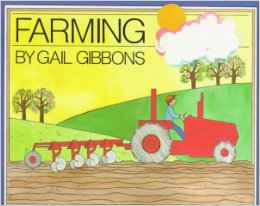Agriculture and Me
Students categorize sources of basic agricultural products alphabetically.
Background
Lesson Activities
Recommended Companion Resources
Standards
Texas Content Area Standards
-
ELA: K.110.2.b.1
Developing and sustaining foundational language skills: listening, speaking, discussion, and thinking - - oral language. The student develops oral language through listening, speaking, and discussion.
- ELA: K.1.C: The student is expected to share information and ideas by speaking audibly and clearly using the conventions of language.
-
ELA: K.110.2.b.5
Comprehension skills: listening, speaking, reading, writing, and thinking using multiple texts. The student uses metacognitive skills to both develop and deepen comprehension of increasingly complex texts.
- ELA: K.5.H: The student is expected to synthesize information to create new understanding with adult assistance.
-
ELA: 1.110.3.b.1
Developing and sustaining foundational language skills: listening, speaking, discussion, and thinking - - oral language. The student develops oral language through listening, speaking, and discussion.
- ELA: 1.1.C: The student is expected to share information and ideas about the topic under discussion, speaking clearly at an appropriate pace and using the conventions of language.
-
ELA: 1.110.3.b.2
Developing and sustaining foundational language skills: listening, speaking, reading, writing, and thinking - - beginning reading and writing. The student develops word structure knowledge through phonological awareness, print concepts, phonics, and morphology to communicate, decode, and spell.
- ELA: 1.2.E: The student is expected to alphabetize a series of words to the first or second letter and use a dictionary to find words.
- ELA: 1.2.F: The student is expected to develop handwriting by printing words, sentences, and answers legibly leaving appropriate spaces between words.
-
ELA: 1.110.3.b.6
Comprehension skills: listening, speaking, reading, writing, and thinking using multiple texts. The student uses metacognitive skills to both develop and deepen comprehension of increasingly complex texts.
- ELA: 1.6.H: The student is expected to synthesize information to create new understanding with adult assistance.
-
ELA: 2.110.4.b.1
Developing and sustaining foundational language skills: listening, speaking, discussion, and thinking -- oral language. The student develops oral language through listening, speaking, and discussion.
- ELA: 2.1.C: The student is expected to share information and ideas that focus on the topic under discussion, speaking clearly at an appropriate pace and using the conventions of language.
-
ELA: 2.110.4.b.2
Developing and sustaining foundational language skills: listening, speaking, reading, writing, and thinking -- beginning reading and writing. The student develops word structure knowledge through phonological awareness, print concepts, phonics, and morphology to communicate, decode, and spell.
- ELA: 2.2.D: The student is expected to alphabetize a series of words and use a dictionary or glossary to find words.
-
ELA: 2.110.4.b.6
Comprehension skills: listening, speaking, reading, writing, and thinking using multiple texts. The student uses metacognitive skills to both develop and deepen comprehension of increasingly complex texts.
- ELA: 2.6.H: The student is expected to synthesize information to create new understanding.
-
Technology Applications: 126.1.c.3
Creativity and innovation--innovative design process. The student takes an active role in learning by using a design process to solve authentic problems for a local or global audience, using a variety of technologies. The student is expected to:
- Technology Applications: 126.1.c.3.A: practice personal skills, including following directions, needed to successfully implement design processes
-
Technology Applications: 126.2.c.3
Creativity and innovation--innovative design process. The student takes an active role in learning by using a design process to solve authentic problems for a local or global audience, using a variety of technologies. The student is expected to:
- Technology Applications: 126.2.c.3.A: practice personal skills and behaviors, including following directions and mental agility, needed to implement a design process successfully
-
Technology Applications: 126.3.c.3
Creativity and innovation--innovative design process. The student takes an active role in learning by using a design process to solve authentic problems for a local or global audience, using a variety of technologies. The student is expected to:
- Technology Applications: 126.3.c.3.A: demonstrate personal skills and behaviors, including effective communication, following directions, and mental agility, needed to implement a design process successfully
 Discuss the information contained in the Background Agricultural Connections, then pass out the
Discuss the information contained in the Background Agricultural Connections, then pass out the 